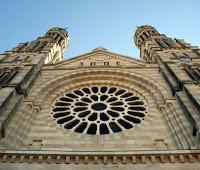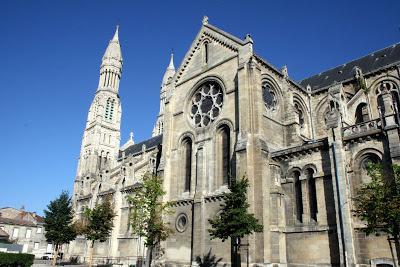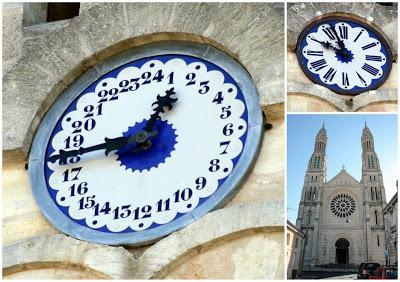 The 70-metre-high twin bell towers of Sacré-Coeur parish church are one of the constants on the skyline of the residential streets near Saint-Jean railway station.
The 70-metre-high twin bell towers of Sacré-Coeur parish church are one of the constants on the skyline of the residential streets near Saint-Jean railway station. They have towered over the surrounding échoppes since 1870. The church was one of many to be built during that second half of the 19th century as part of a drive led by the then Archbishop of Bordeaux, Cardinal Donnet. In fact, spires and steeples were going up or being restored at such a rate that Baron Haussmann, best-known as the Prefect and city-planner behind the tree-lined boulevards of Paris (but who had also spent time serving at Blaye, in Gironde), is quoted as telling Donnet that Gironde was beginning to “look like a hedgehog” (“Notre département, Monseigneur, ressemblera d’ici peu à un hérisson !”).
The spires throughout the département from that period remain though, and are referred to by some as “les clochers Donnet” (the Donnet belfries). The square that surrounds Sacré-Coeur also bears the name of Cardinal Donnet, perhaps in return for his decision to support the construction of the church, which he himself chose to call Sacré-Coeur. Its construction had been both funded and executed by locals, under the leadership of one Abbé Buchou.

The view from Place Cardinal Donnet.
Over the early years of the church, the area developed into a veritable dormitory for railway workers (and, a little later, for employees at the nearby postal sorting office). By the early years of the 20th century, it was felt that the all these hardworking souls would benefit from the addition of clocks to the church towers. Sacré-Coeur’s Abbé Fonce’s clock plans moved up a gear when a wealthy traveller, Spain’s 26-year-old King Alfonso XIII, spent time in the city in September 1912. Accompanied by his son, Alfonso was staying at a hotel near the railway station and attended two masses at Sacré-Coeur. Fonce hastily organised a collection and the King’s generosity played a large part in two clocks subsequently being added to the front of the church.

The clock on the left-hand steeple features a curious 24-hour dial – the only one of its kind on a church-front in the region - while its right-hand steeple counterpart is a more conventional 12-hour model.
What, then, is the thinking behind the 24-hour clock? The explanation lies a little further up the page, namely the high proportion of railway workers living in the district! In a Rues de la Gare item, a retired railway worker explains that “trains don’t depart at 2 in the afternoon but at 14-hundred hours, and we wouldn’t finish work at 7 but rather at 19-hundred hours” (“Un train ne part pas à deux heures de l’après-midi mais à quatorze heures, et on ne débauche pas à sept heures mais à dix-neuf.”). So, to remain faithful to the vocabulary and working patterns of the locals, the 24-hour dial was more than apt!

Inside Sacré-Coeur.
When I was there, the 24-hour clock appeared to be out of order. What is more, it was a mid-morning visit (around 10am, sorry, ten-hundred hours) and, pre-noon, I was unable to verify the claim in the Rues de la Gare piece that the church bells chime in accordance with the 24-hour clock… which would make for a mighty 23 tolls of the bell every night at 11pm!
- Find it: Place du Cardinal Donnet, Bordeaux.
- Official Sacré-Coeur parish website: http://sacrecoeur.info/
- Thanks to Harvey who raised the subject of Cardinal Donnet during an e-mail exchange!
